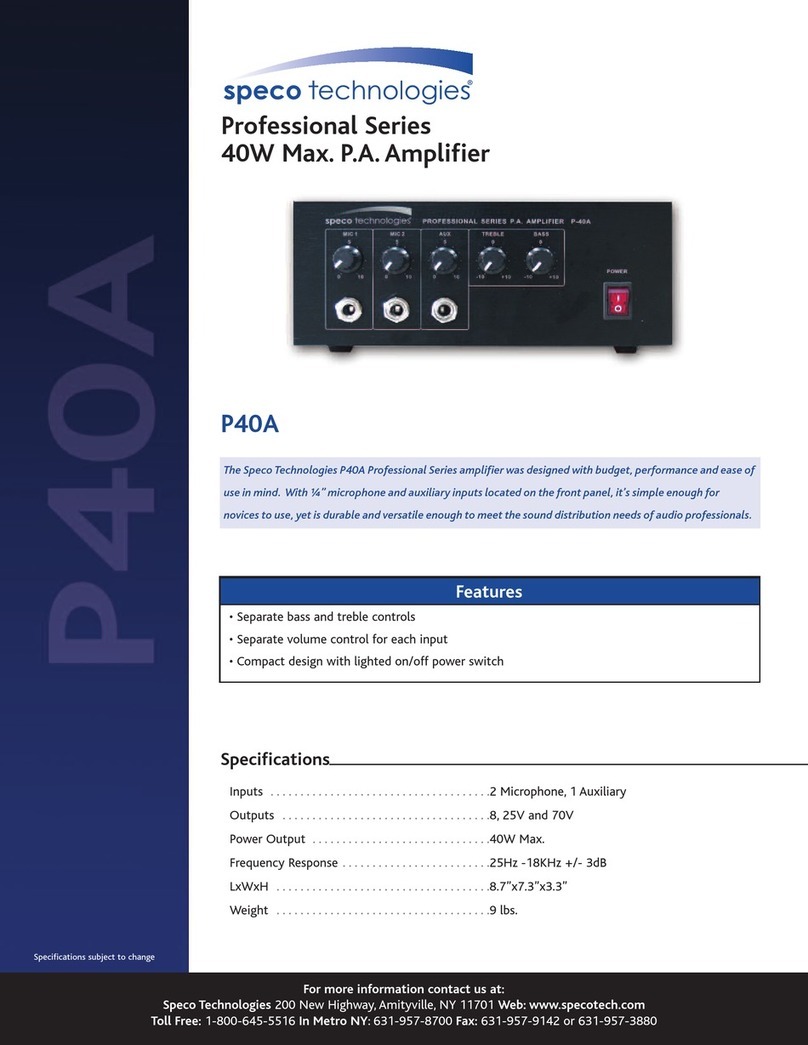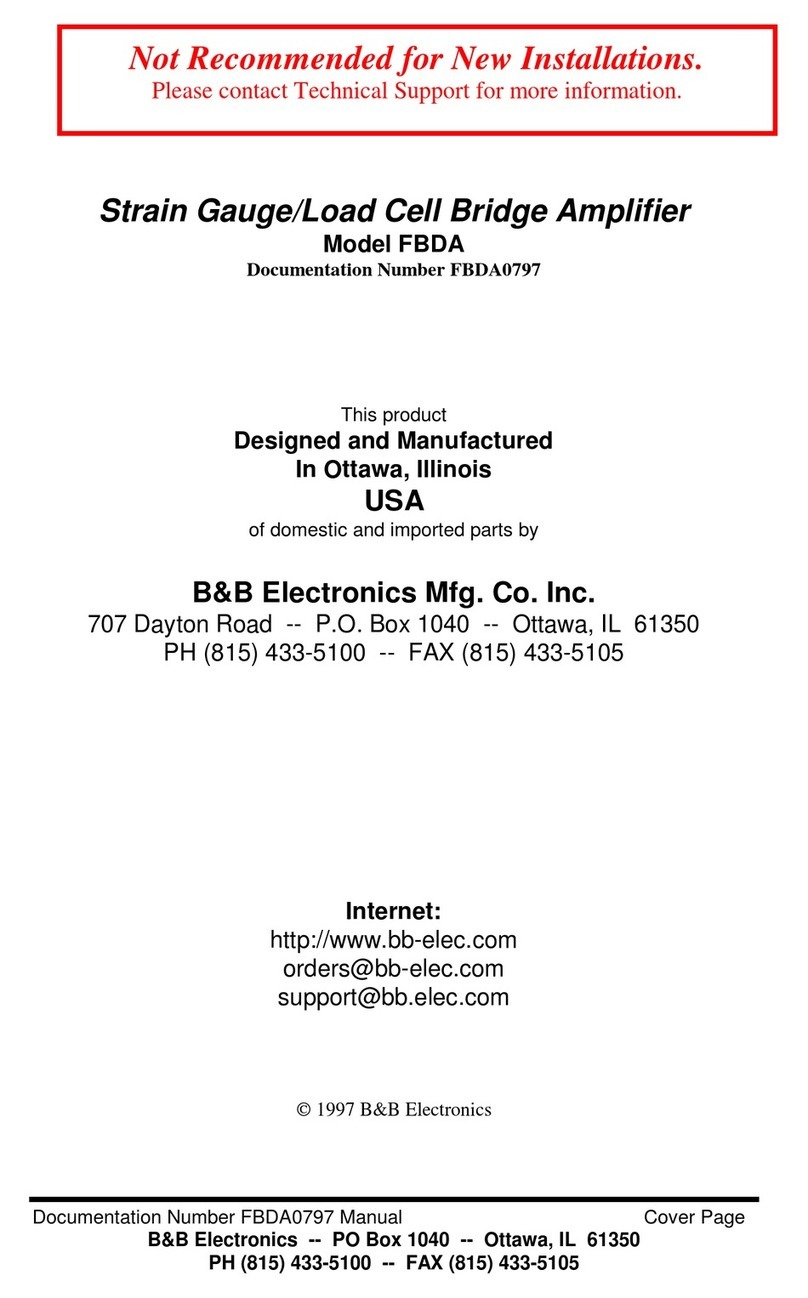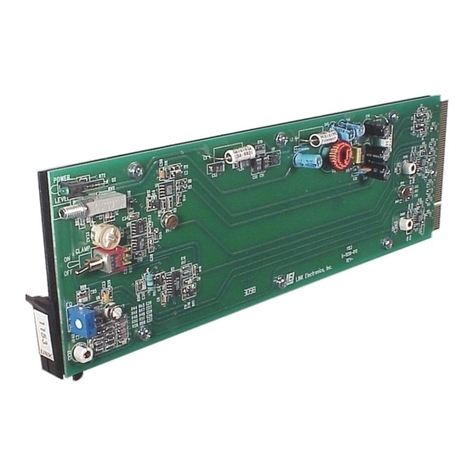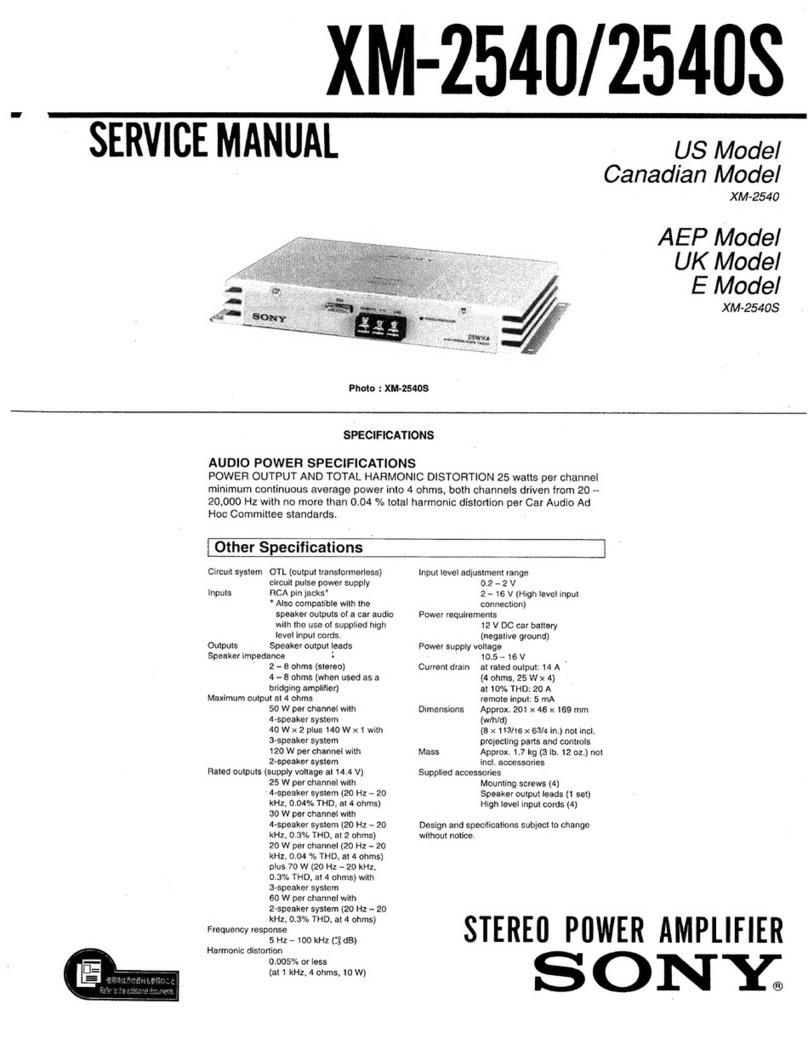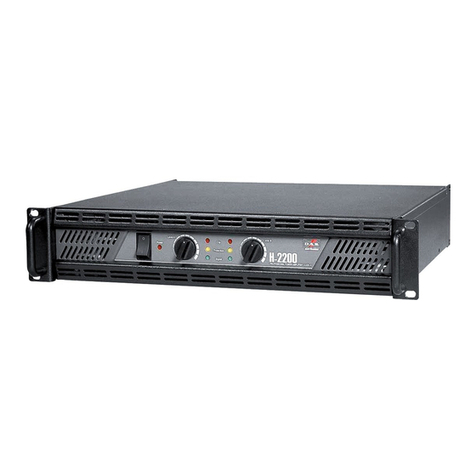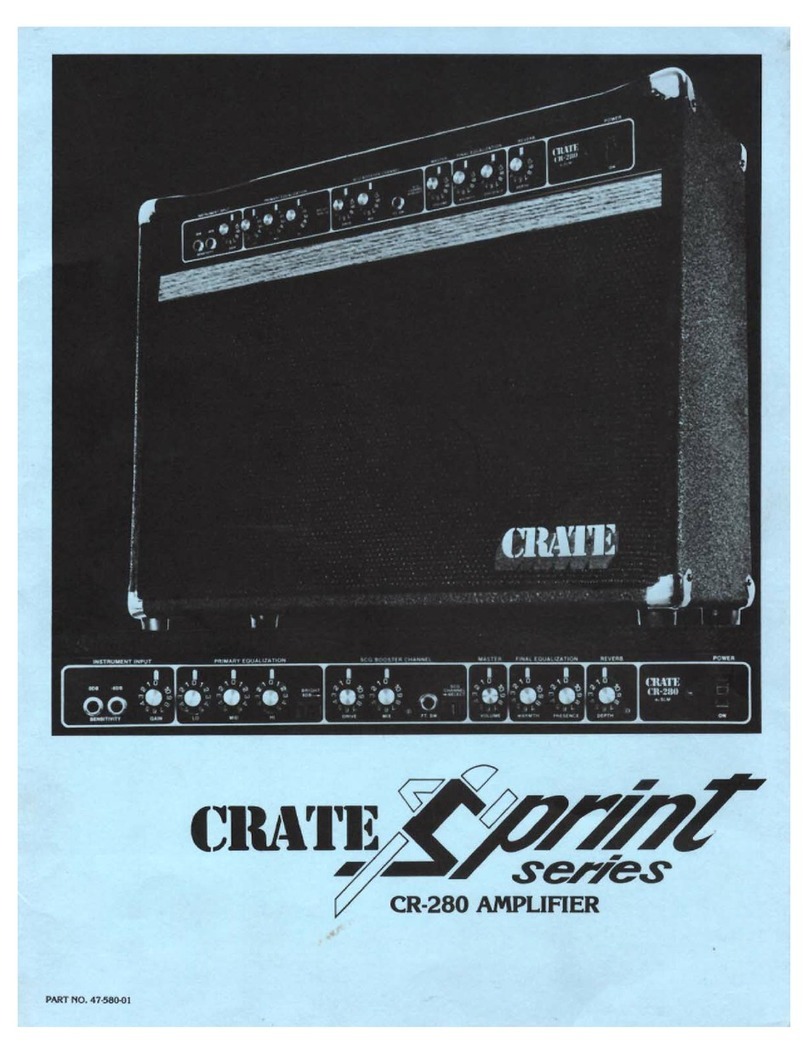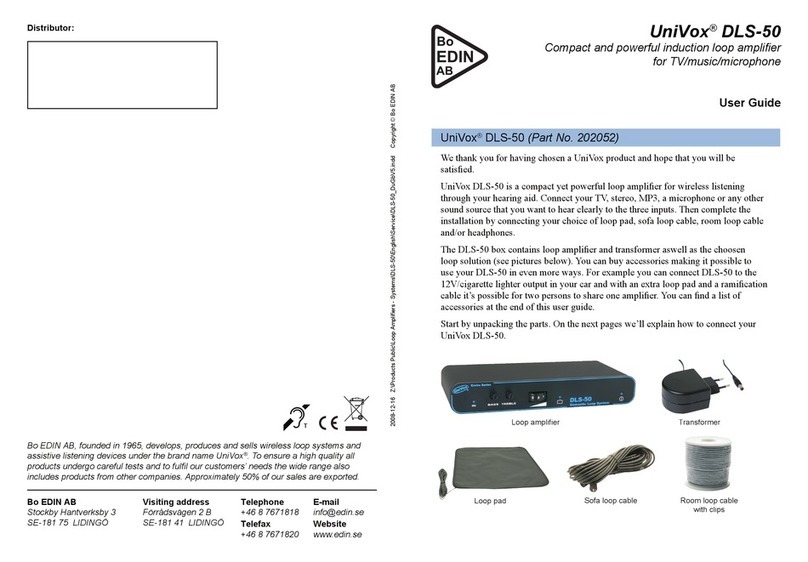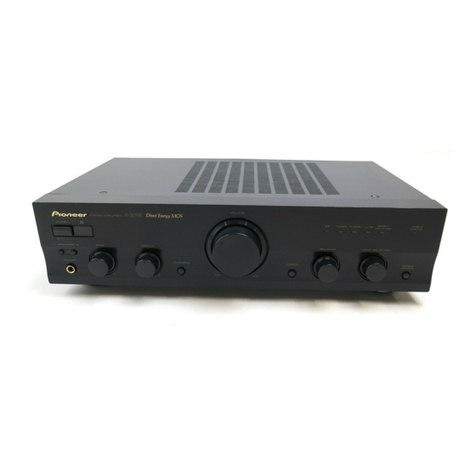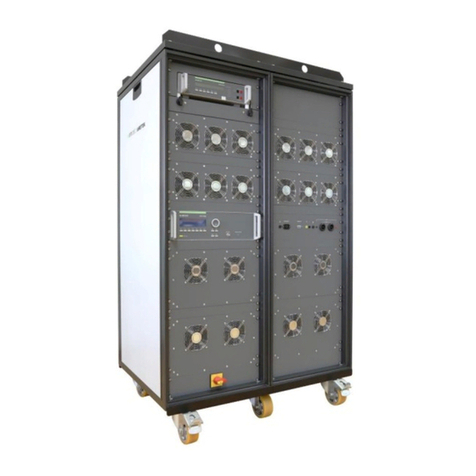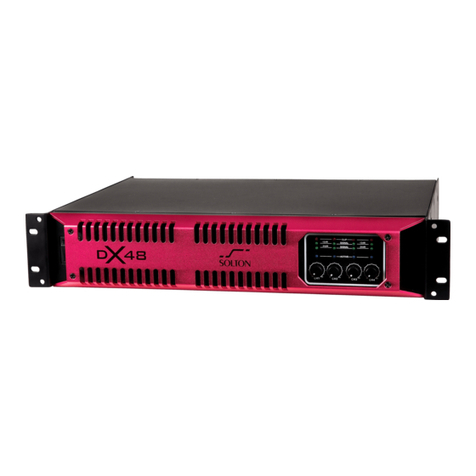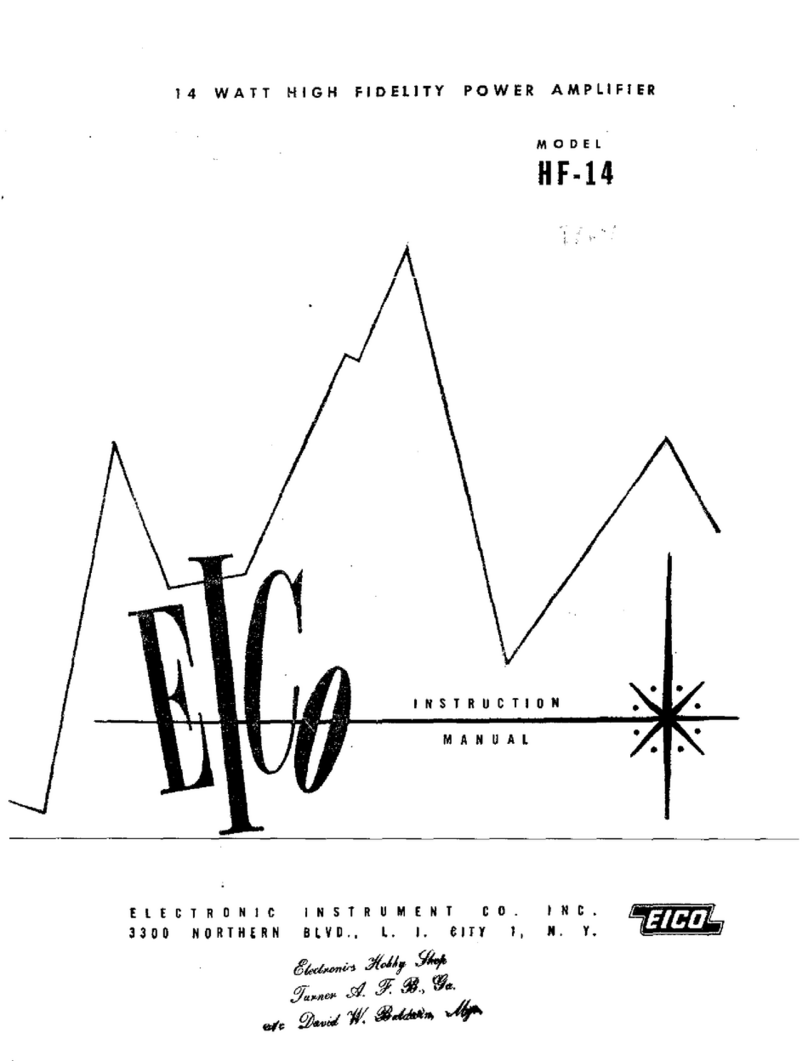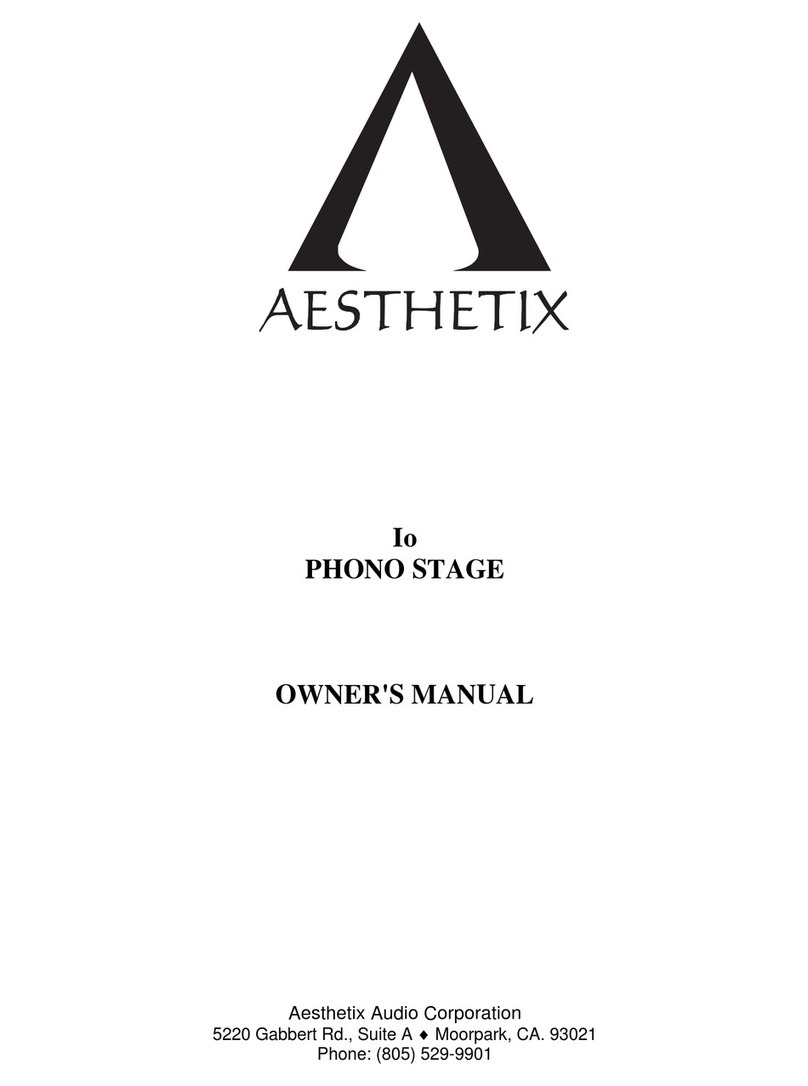
UNIVOX 380
WARNING!
LIVE TERMINALS ENCLOSED.
Always remove the power cord cable
before opening the amplifier!
2001-12-07
Site: www.edin.se
Loop current adjustment is done with 3 dB steps at the connector. Finer adjustment can be
made (normally not needed) with the trimmer marked ”LOOP ADJ” at the printed circuit
board (fig 4, page2).
UNIVOX 380 fulfils the International standards for Loop Systems up to 170m2 (squared
loop, 1.2 m above the loop level). Reinforced concrete and other metallic objects can reduce
covered area strongly. The installation not is completed until Field Strength is verified
according to international regulations (IEC 60118-4). For correct measurement use FSM,
field strength meter, together with the standardized artificial speech for correct result.
CD & meter are available.
2. TONE SIGNALING & DOORBELLS :
All connections except Fig 2D generates a signal, rich of harmonics through the loop.
2A. Door signal from existing system, 5-24VAC/DC. For DC operation connect + to pin 8.
The tone signalling output from a UNILUX 75F can be connected to this input: connect
75F pins 13&14 to 380 pins 8 and 9 respectively.
2B. Door and/or telephone bell with current supplied from the 380. 12V AC max. 1.6A.
2C. Tone signalling by closing contacts, pins 7&8 is strapped.
2D. Voltage outputs, 12V AC, max. 1.6A, no tone signalling via the loop.
3. INPUTS/OUTPUTS:
Potentiometer ”In Adj” sets the input sensitivity. It is factory set to 50mV. There is normally no
need for adjustments because of the Dual Action AGC-circuitry.
IN1/IN2 = 7mV-10V/330Ohm, standard (uncut resistor). 150kOhm with cut resistor.
IN3 = 7mV-10V/100kOhm. Stereo input. Phantom Voltage matches all Bo Edin microphones.
A 50/100 Volts-line needs a separate transformer close to the UNIVOX 380.
Auto Mute function (noise gate). If input signal is below AGC-knee level, (AGC-LED is off)
the amplifier mutes after 10 seconds. This reduce the risk of magnetic self oscillation when the
AGC circuitry slowly increases the gain. Disable this function by removing the jumper Auto
mute if there is a risk for quiet parts to be muted unnecessarily.
Note: When using high impedance signal (not recommended) into IN1 or IN2, the respective
resistors marked IN1/IN2 on the Printed Circuit Board must be cut. Normally not necessarily
Input 3 = IN3 on 7-pin DIN-connector on the right hand side. This connector also includes the
line output 0dB and a small power supply output. Please see Fig. 3B. The microphone 13B can
be used with the TV-loudspeaker if a Scart connector is missing.
Note: No unconnected wire is permitted. The signal wires must be kept as far as possible
from the loop cable. Avoid parallel installations at distances of less than 200mm. Crossovers
are permitted.
4. STARTING UP: Connect UNIVOX 380 to the mains outlet (“ON” LED lights up). Please
note that the amplifier is constructed to be continuously powered. This actually increases the
apparatus lifetime. The stand-by power consumption is very low.
The LED marked “AGC” indicates when the input signal is high enough.
The LED marked “LOOP” indicates when there is current floating (sound in the Hearing
Instrument at T-position) in the loop.
A corresponding jumper inside the amplifier activates the AGC & LOOP Led. (Fig 4).
Check the frequency response and field strength according to the UNIVOX way to fulfil
the BS 6083 & international standard IEC 60118-4.
1. LOOP OUTPUT. Place the amplifier in a suitable position. It must not be covered.
Connection loop wires must be twisted. Normally single turn loops should be used, but two
turns loops give better result especially in smaller areas. Use a twin cable for trial purpose.
Select according to table below:
Fig.1
Loop
Area
1 2 3 4 5 6
Fig.2A
Door Bell
(With loop
beep signal)
7 8 9 10
Fig.2B
12V AC
Max. 1.6A
(With loop
beep signal)
7 8 9 10
Fig.2C
(With loop beep signal)
7 8 9 10 11
Fig.2D
12V AC
Max. 1.6A
(Without loop
beep signal)
7 8 9 10 11
IN3/Mic & Scart
12V DC
Max 30mA
0 dB
OUT
1
4
3
76
Fig.3B
Left.
Right
2
+
IN1 IN2
Fig.3A
12 13 14 15
Area m2Pin No 1-turn 2-turn Level
100-170 1&2 >= 3mm2---- 0 dB
75-100 1&3 >= 3mm2---- -3 dB
50-75 1&4 (1.5mm2) >= 2x1.5mm2-6 dB
35-50 1&5 (0.75mm2) 2x1.5mm2-9 dB
<=35 1&6 ---- 2x1.5mm2-12 dB
Setup Instructions for
Loop Amplifier


